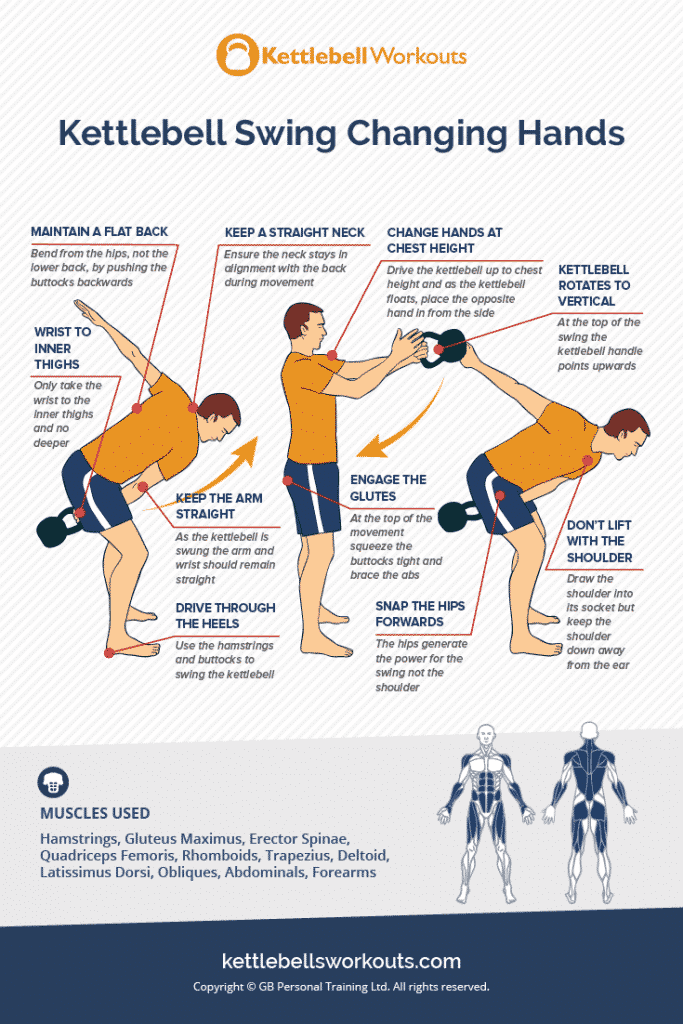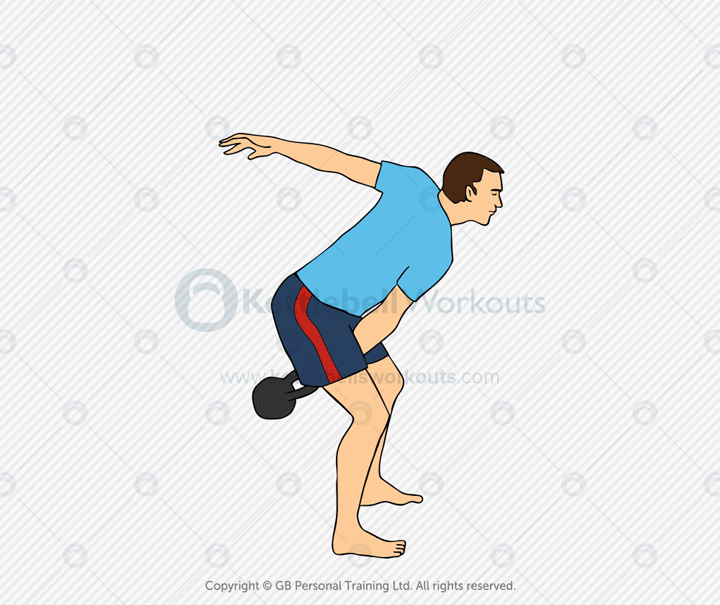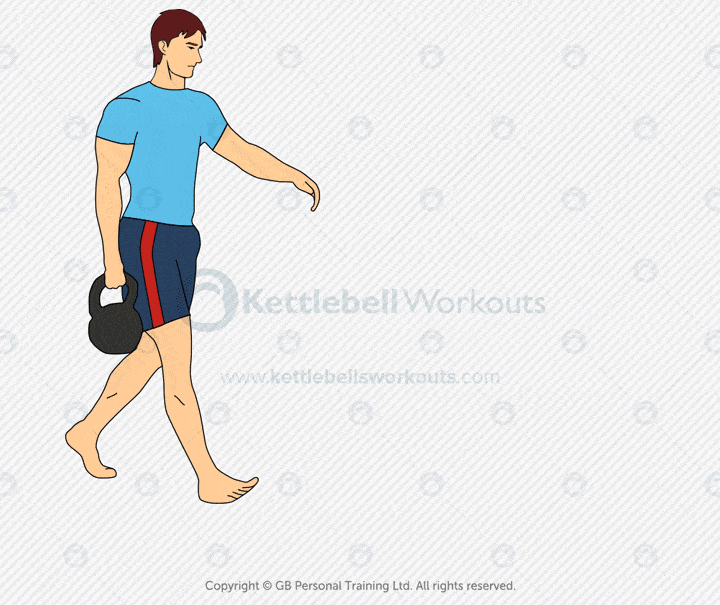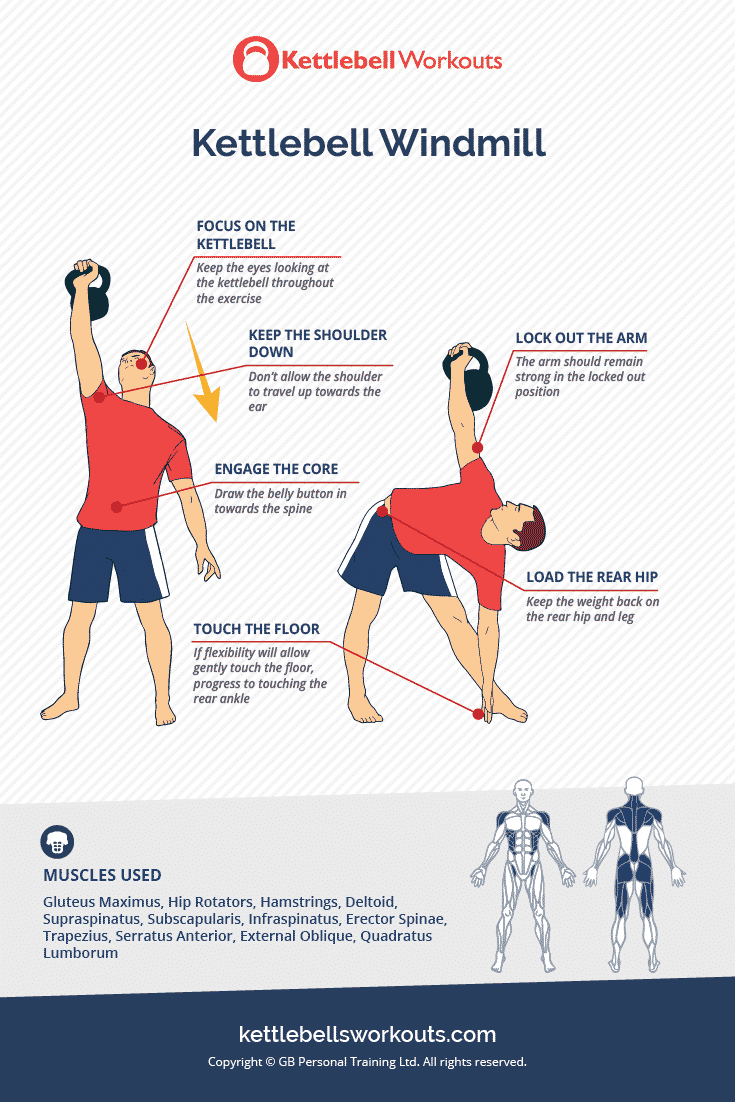Last Updated on 29 July 2025 by Greg Brookes

The kettlebell alternating swing is a powerful twist on the standard one-hand swing, where you switch hands at the top of each rep. This dynamic version builds power, coordination, and grip endurance, all while keeping your heart rate elevated.
Whether you’re flowing through circuits or aiming to enhance unilateral hip drive, the alternating swing slots seamlessly into your kettlebell practice.
It also serves a crucial function: switching hands mid-set without putting the kettlebell down. This makes it essential for extended sets of one-arm swings, cleans, or snatches, and a go-to movement in flow sessions, where keeping the kettlebell moving is key.
What Is the Kettlebell Alternating Swing?
The kettlebell alternating swing is the one-hand swing, you toss the bell forward, then switch it to the opposite hand at the top of its arc before it swings back down. It’s a full-hinge, hip-dominant movement with a mid-rep hand switch that tests timing and coordination.
Unlike the rigid duty of performing sets of single-arm swings on one side before switching, this version forces bilateral engagement and fluid rhythm, making it a favourite in metabolic conditioning and flow-based sessions.
Why It Matters
The alternating swing elevates the traditional swing in several ways:
- Improves hip drive velocity: Switching hands mid-swing forces you to maintain consistent snap and power.
- Enhances coordination: You can’t coast, your brain and body stay synchronised.
- Builds grip endurance: Your hand strength and forearms get a serious challenge with each switch.
- Boosts metabolic demand: Switching adds an element of cardio and tempo training that ramps up calorie burn.
- Preps you for flow-based sequences: Seamless transitions into cleans, snatches, or high pulls become second nature.
- Allows uninterrupted hand switches: Ideal when moving from one side to the other in flows without setting the bell down.
Muscles Worked
- Glutes & hamstrings (deadlift chain hip extension)
- Core stabilisers (anti-rotation to control the shift)
- Lats, traps, rhomboids (to decelerate and collect the bell)
- Forearms & grip muscles (for repeated hand switches)
- Shoulders (especially the rotator cuff) for control at the top
How to Do the Kettlebell Alternating Swing (Step-by-Step)
During the one-handed swing, the key moment for the hand switch happens at the top of the movement when the kettlebell is weightless:
- As the kettlebell floats upward to around chest height, maintain full hip extension.
- Just as the bell reaches its apex, release your grip with the working hand.
- Simultaneously, guide your opposite hand in to grab the handle cleanly.
- Transition smoothly, avoid slapping or fumbling the handle.
- Let the new arm take over the swing’s downward arc as you return into the hinge.
Tip: Keep your spine neutral and neck relaxed. Use your hip power, not shoulder, to move the bell. Swing low enough that you can comfortably switch hands at the top.
Watch the Kettlebell Alternating Swing in Action
Common Mistakes to Avoid
- Relying on arms instead of hip drive
- Rushing the switch – don’t let it reduce your power. Switch quickly but deliberately at the top.
- Leaning too far forward at the top, which kills tension
- Dropping hips early – maintain hip extension until the centre of the swing
- Letting the wrist break during the switch, keep a strong neutral grip
Warm-Up Drills to Prep for the Movement
- Hip hinge patterning (e.g., cane deadlifts) – 8 reps
- Single-arm swings – 5 per side at light load
- T-spine rotation drills with a kettlebell – 6 reps each side
- Farmer’s carry holds to fire the grip muscles – 30 sec per side
Programming Tips and Reps
- Reps: 8–12 total (4–6 per side) for strength → 20–30 total for conditioning
- Use as: standalone metabolic drill, part of EMOM, or flow sequence
- Tempo: Smooth but controlled, switch at the top, maintain hip tension
Pair With:
- KB 1-handed swing (either side)
- High-pull or high-swing
- KB alternating clean
- KB alternating press

When to Use This Exercise
- In flow sessions after high-pulls, cleans, or snatches
- For metabolic conditioning – it raises heart rate with less risk than high-skill movements
- As a coordination drill in movement-based training
- To stress-test your grip and core without unilateral fatigue
- When switching hands during other movements without stopping your set
Coach’s Insight: Greg’s Take
The alternating swing is a circuit staple, simple yet brutally effective when done right. The moment you introduce the mid-rep hand switch, the tempo and focus both sharpen dramatically.
I use it constantly to bridge between sides in one-arm swing sets, snatches, or even clean-to-press work. It’s the change that keeps the bell moving without missing a beat.
Tip: Keep your tempo in check, don’t speed up the switch unless your hip snap can back it up. If the rhythm falters, drop rep speed and reset.
Alternating Swing vs. Single-Arm Swing
- Single-arm: Do 8–12 on one side, switch hands. Gives deeper hip recruitment on one side per set.
- Alternating: Integrated switching per rep. Adds coordination work and increases metabolic demand.
- Use alternating when flow, tempo, and endurance are your goal.

Who Should Do This Exercise?
- Conditioned kettlebell users who already swing well
- Anyone wanting to combine power, coordination, and metabolic stress
- Trainers using circuits, flow drills, or high-volume swings
Related Exercises You Can Try Next
- Dual-arm swing
- Single-arm swing
- Kettlebell high-pull
- Kettlebell snatch
- Alternating kettlebell clean
- Alternating kettlebell press
Want More Smart Kettlebell Training?
Discover how to mix power, flow, and precision in every movement.
Ready for more dynamic swing variations? Check out my full kettlebell exercises guide.
Frequently Asked Questions
Yes, if you’ve already mastered the basic swing and can hinge and hip-drive with control, introduce the switch slowly.
Start one size lighter than your usual single-arm swing, this allows cleaner switching and higher tempo.
It’s a firm fast catch, not a sloppy slam. A controlled pass ensures rhythm and keeps tension.
Absolutely. 20–30 reps alternating is a great metabolic finisher or AMRAP station.





Comments